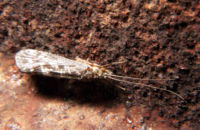Indicator species

An indicator species is like a detective in nature that tells us if something is happening in the environment. Just like how a detective looks for clues to solve a mystery, indicator species give us important clues about the health of an ecosystem.
Imagine a group of plants and animals living in a park. Each species has its own unique needs and preferences. Some require specific types of water, food, and shelter to thrive. When something changes in the environment, not all species are affected in the same way. Some may continue to grow and reproduce, while others struggle to survive.
Indicator species are those that are particularly sensitive to changes in the environment. They're like the "canary in a coal mine" – birds that were once used to detect toxic gases underground because they’re especially susceptible to its effects. When we study these species, we can learn a lot about what's happening to their habitats.
For example, certain types of fish are indicator species for water pollution. If we find that these fish are dying off or their populations are declining, it could be a sign that the water is contaminated. Similarly, some bird species are indicator species for deforestation. When trees are cut down, habitats are destroyed, and many bird species lose their homes.
By keeping an eye on indicator species, biologists and conservationists can identify problems and work to protect the environment before it's too late.
Imagine a group of plants and animals living in a park. Each species has its own unique needs and preferences. Some require specific types of water, food, and shelter to thrive. When something changes in the environment, not all species are affected in the same way. Some may continue to grow and reproduce, while others struggle to survive.
Indicator species are those that are particularly sensitive to changes in the environment. They're like the "canary in a coal mine" – birds that were once used to detect toxic gases underground because they’re especially susceptible to its effects. When we study these species, we can learn a lot about what's happening to their habitats.
For example, certain types of fish are indicator species for water pollution. If we find that these fish are dying off or their populations are declining, it could be a sign that the water is contaminated. Similarly, some bird species are indicator species for deforestation. When trees are cut down, habitats are destroyed, and many bird species lose their homes.
By keeping an eye on indicator species, biologists and conservationists can identify problems and work to protect the environment before it's too late.
Related topics others have asked about:
